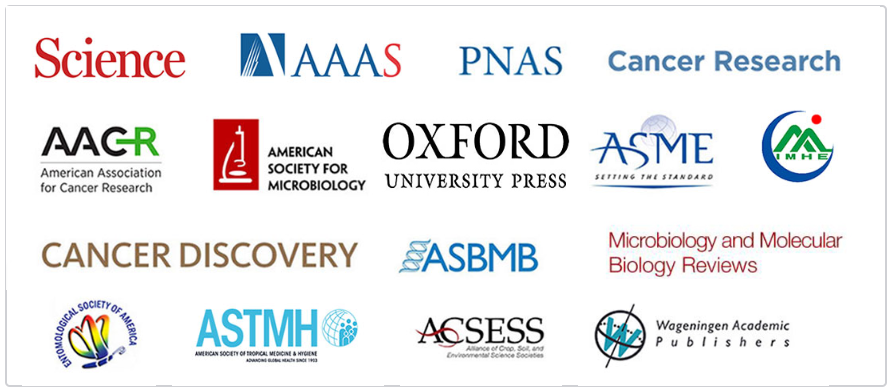博文
教你十个小妙招,轻松降低论文重复率!
|
大多数期刊会利用抄袭检测软件(例如iThenticate)检查提交上来的论文,根据查重报告来确定论文内容与已发表的文献有多少相似。如果重复率太高,稿件将不会进入同行评审。
如果您的稿件被期刊标记为有潜在抄袭可能,可查阅我们之前发过的文章《查重报告显示重复率过高怎么办?》进行处理。
处理重复率过高最简单的方法或许是重写有问题的部分以减少重复,然后重新提交文稿。
因为描述常用方法、过程和材料的方法只有那么多,所以方法部分是稿件中最有可能重复率偏高的部分。
如果您的论文中方法部分被查出与现有研究过于相似,这里有十个技巧可以减少重复并降低查重率。
减少重复的改写技巧
降低重复率的一个显而易见的方法是将其中的单词替换为具有相同或相似含义的不同单词。
但是,必须注意不要在同一个句子中替换太多单词或使用太不常用的单词,否则会降低文本的可读性。
同时还应该确保这些替换不会改变文本的含义。适度使用这种技巧,每句中最多替换一两个单词。
改写前:The survey was administered between June and July of 2021.
改写后:The questionnaire was distributed between June and July of 2021.
2.添加(或删除)单词。
除了替换单词,还可以添加(或删除)一些单词,这个方法特别适用于形容词。如果一个形容词不是那么绝对必要,就可以将之删除。
除了降重以外,其他时候也应考虑删除不必要的单词。
相反的做法是,通过添加一个形容词或附加额外描述来拆分重复的文本以降低重复率。要确保文章在进行添加或删除后仍然准确。
改写前:The warblers became very loud after they spotted a predator.
改写后:The warblers became loud after they spotted a winged predator.
英语中有两种语法语态:主动语态和被动语态。在主动语态中,句子的主语正在做某事,而在被动语态中,有某事正被施加在句子的主语上。
为了减少重复,可以将句子从主动语态改写成被动语态,反之亦然。
改写前:Then,qPCR was performed on the samples.
改写后:Then, we performed qPCR on the samples.
如果方法部分有一个列表形式的句子,其中项目的顺序无关紧要,可以通过重新排序列表来降低重复率。这一策略最适用于材料清单,但不要对表示连续步骤的列表进行重新排列。
改写前:We mixed 2 g distilled water, 3 g NaCl, and 4 g sucrose together in a flask.
改写后:We mixed 4 g sucrose, 2 g distilled water, and 3 g NaCl together in a flask.
如果有一个长句与文献重复,可以把它分成多个短小的句子,或者如果有一个短句被标为与文献重复,可以将它与相邻的句子合并起来以降低重复率。在某些情况下,可以同时使用这两种策略。如下例所示:
改写前:When we surveyed the literature, we found 12 studies related to type 1 diabetes.We also found 14 related to type 2 diabetes, so taken together we found 26 relevant studies.
改写后:When we surveyed the literature, we found 12 studies related to type 1 diabetes and 14 related to type 2 diabetes. Taken together, we found 26 relevant studies.
这是快速降低重复率的最有效方法之一,但如果使用不当,也可能会有问题。
如果一个句子与文献语句重复,可以重新排列其中的从句以降低重复率。这样做时,应确保句子仍然易于理解并且具有相同的含义。
改写前:As the satellite fell into a decaying orbit, it began to burn up in the atmosphere.
改写后:The satellite began to burn up in the atmosphere as it fell into a decaying orbit.
这是第一个技巧的变体,但重要到足以单独来说一说。
过渡词用于将句子连接在一起,帮助读者理清文稿的逻辑,包括moreover, furthermore, however, after, additionally, next, finally等等这些词。
虽然并非所有的过渡词都可以互换,但在方法部分交替地使用它们不仅可以降低重复率,还可以使文稿更易于阅读。
改写前:First, we collected the samples. After that, we weighed them. We also measured their diameters. Finally, we disposed of them in accordance with the laboratory’s safety guidelines.
改写后:To begin, we collected the samples. Then, we weighed them and measured their diameters before we disposed of them in accordance with the laboratory’s safety guidelines.
如果在被标记为重复的文本中使用了代词,例如he, she, it, they,可以将其替换为它所指的特定单词。
这也是一条通用的写作建议,这样做可以是语句更加清晰。
相反,用代词替换特定单词时,如果不小心,可能会导致语句模棱两可,因此不建议用代词替换特定单词来降低重复率。
改写前:After measuring the change in sea level, they moved to the next location and did it again.
改写后:After measuring the change in sea level, the team moved to the next location and began the process again.
通常,短语可以简化为一个单词。虽然一般来说写作应尽可能简单和简洁,但如果有必要,也可以将一个简单的单词扩展为一个简短的短语。这两种策略都可以帮助降低重复率。
改写前:After we welded the beams, we measured their combined length.
改写后:After welding the beams, we measured the length of both of them combined.
虽然所有这些策略本身都可以减少重复,从而降低重复率,但轻松实现这一目标的最有效方法是组合多种策略,甚至在同一个句子中也是如此。
改写前:We monitored social media posts there for two months—April and May—and found that most commenters fell into one of two categories: supporters or opponents of the law.
改写后:After monitoring posts on Twitter in April and May, we discovered that mostusers either strongly supported or opposed the law.
无论是因为论文使用了常见的方法还是您发表过相同主题的论文,如果您担心论文手稿可能与文献中的语句相似,欢迎您使用LetPub 查重(Plagiarism Check)服务,让您在提交给期刊之前看到iThenticate对稿件的重复率报告。
然后,使用上述这些技巧,您可以通过对论文进行改写或者选择LetPub语言改写服务降低重复率,确保论文顺利进入同行评审过程。

SCI论文英语润色│同行资深专家修改│专业论文翻译│格式排版整理│SCI论文图片处理│Video Abstract
学术翻译英译中│SCI论文查重│LaTeX论文润色│SCI论文写作讲座│联系我们
https://blog.sciencenet.cn/blog-1232242-1331356.html
上一篇:科研小白的第一篇SCI心路历程分享【征稿系列34】
下一篇:如何选择适合自己的在线继续教育课程
